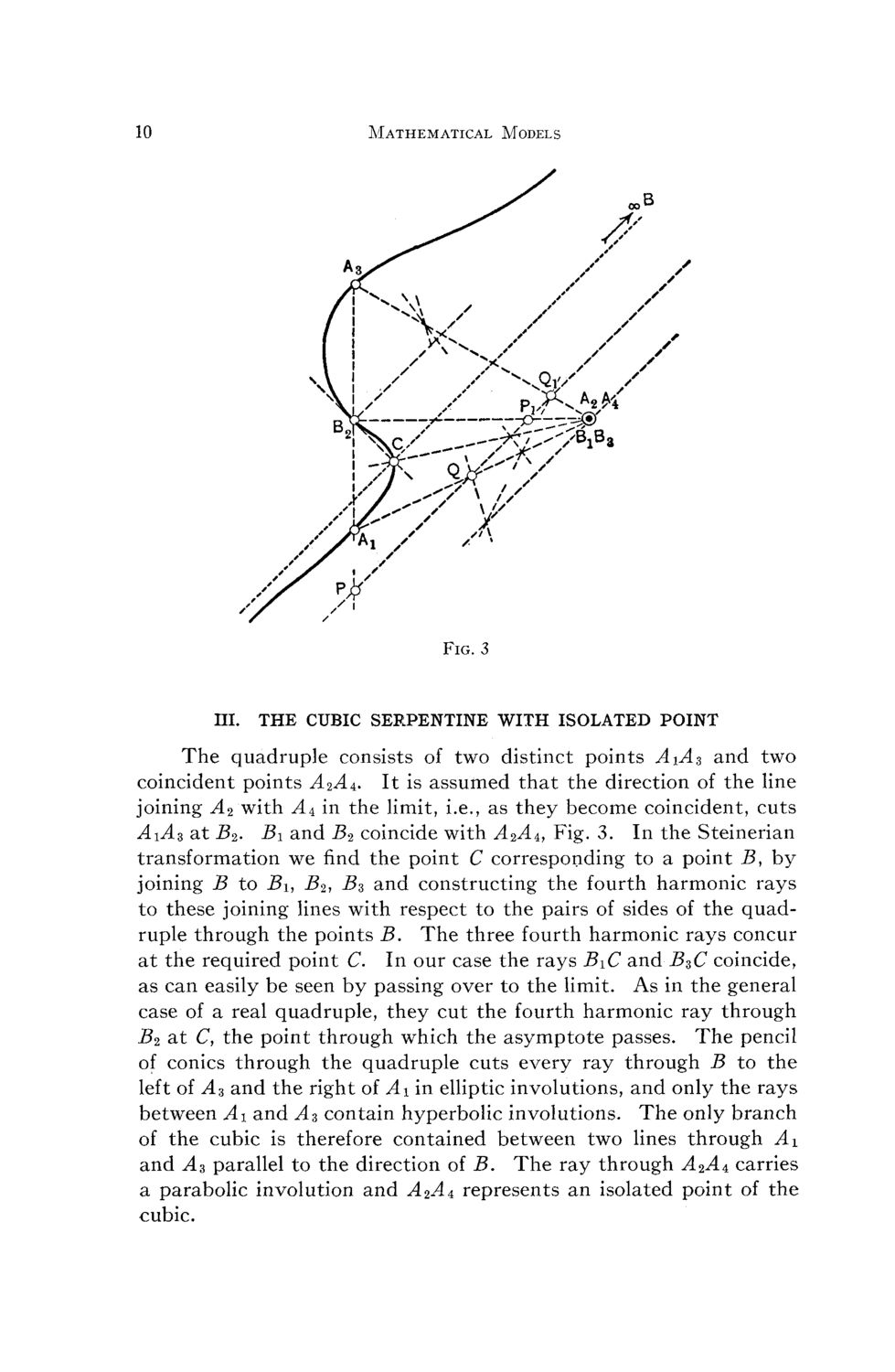| |
| |
Caption: Mathematical Models by Arnold Emch - Series 4 (1928)
This is a reduced-resolution page image for fast online browsing.

EXTRACTED TEXT FROM PAGE:
10 Mathematical Models 00 ' Fig. 3 III. THE CUBIC SERPENTINE WITH ISOLATED POINT The quadruple consists of two distinct points AiA% and two coincident points A2A±. It is assumed that the direction of the line joining A2 with A± in the limit, i e , as they become coincident, cuts .. AiAz at B2. B\ and B2 coincide with A2A±, Fig. 3. In the Steinerian transformation we find the point C corresponding to a point B, by joining B to B\, B2, Bz and constructing the fourth harmonic rays to these joining lines with respect to the pairs of sides of the quadruple through the points B. The three fourth harmonic rays concur at the required point C. In our case the rays B\C and BZC coincide, as can easily be seen by passing over to the limit. As in the general case of a real quadruple, they cut the fourth harmonic ray through B2 at C, the point through which the asymptote passes. The pencil of conies through the quadruple cuts every ray through B to the left of As and the right of Ai in elliptic involutions, and only the rays between Ai and Az contain hyperbolic involutions. The only branch of the cubic is therefore contained between two lines through A\ and A3 parallel to the direction of B. The ray through A2A± carries a parabolic involution and A2A± represents an isolated point of the cubic.
| |